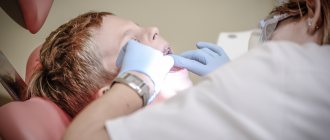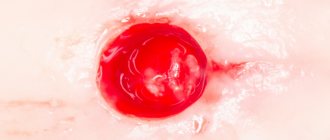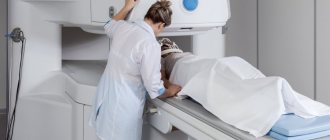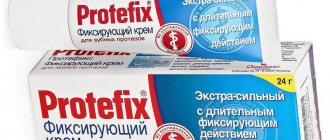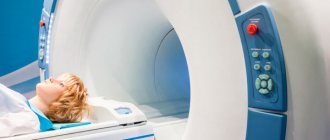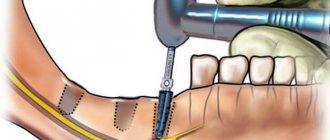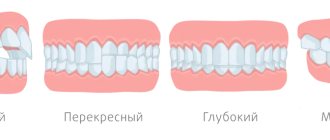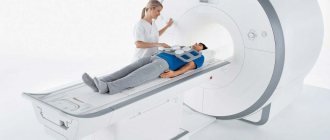Why install the pin?
The pin is installed in the tooth cavity for the purpose of:
- improving the fixation of the filling (in such cases, preference is given to fiberglass or ceramic products, since they do not shine through the composite restoration, thereby not disturbing aesthetic indicators);
- formation of a tooth stump from a filling material, followed by the manufacture of a crown for this tooth (in this clinical situation, installation of metal products is possible).
Pins are recommended for use in cases of significant destruction of the tooth crown due to caries, trauma, or increased abrasion of hard tooth tissues. They can also be used by dentists for restorations of the frontal group of teeth in case of their significant inclination.
Prevention of crown loss
The service life of a tooth on a post depends on the design features, compliance with the technology of its installation, and the quality of oral care. To prevent the tooth from becoming loose on the post, it is important:
- regularly brush your teeth with toothpaste selected by your dentist,
- use rinses, floss,
- avoid excessive pressure on the artificial crown,
- limit or completely eliminate the consumption of solid foods - nuts, seeds, etc.,
- periodically have professional teeth cleaning,
- undergo preventive examinations with a dentist at least once every six months.
By following these rules, you can extend the life of the restored tooth.
Pin installation process
Since such structures are installed at the root of a tooth, the root canal must be hermetically sealed over its entire length, and not have any curvatures, too thin walls, or perforations.
How to insert a pin into a tooth:
- Passing the canal two-thirds of its length using a special tool - a root reamer with expansion of its cavity to the selected pin diameter. The length of the root part of the pin must be at least twice as long as the planned tooth stump.
- Antiseptic treatment of the canal (rinsing with antiseptic solutions, most often chlorhexidine), drying.
- Immersion of the pin into the formed canal and fixation with glass ionomer cement or dual-curing cement.
- Removing excess material.
- Modeling of a filling or tooth stump depending on the drawn up treatment plan.
What to do if you get loose
Of course, it is very important to seek advice from your doctor as soon as possible. Only a professional will be able to determine why the pin is moving, conduct a complete sanitation of the oral cavity and prescribe a comprehensive examination. After removal, antibacterial treatment will be carried out, after which it will be possible to talk about the etiology of this pathology. If there is a doctor's error or non-compliance with the rules of care, a repeat operation may be prescribed.
If engraftment fails due to the small volume of bone tissue, then bone augmentation will most likely be required. If chronic disorders or oncology were discovered, then another installation will have to be abandoned. An alternative may be removable prosthetics.
Often, symptoms that appear, for example, the smell of rot or movement, can be eliminated by carrying out the following manipulations: screwing in the pin plug, thoroughly cleaning all external elements. In some cases, the dentist is able to save the implant. The most important recommendation is a timely visit to a medical facility at the slightest suspicion of loosening.
Why does pain appear after installing a pin and what to do?
Even though the tooth is pulpless, pain may appear in it after the pin is installed. Most often, the cause of pain can be poor quality treatment of the tooth canals, and, as a result, the development of an inflammatory process. This may be incomplete removal of the tooth pulp, perforation of the root wall, or removal of the filling material beyond the apex. In such situations, you can try to treat the tooth, but the installed structure will have to be removed.
The tooth may also begin to hurt if the root wall is perforated by the pin itself when it is inserted.
A separate group of people have toothache after installing a pin due to an allergic reaction of the body to the construction material. This often happens when fixing polymer fiberglass products. Individual intolerance may also be to fixing cement.
Poorly manufactured crowns or fillings may also result in complaints of pain in the treated tooth. They are explained by the fact that the new orthopedic design increases the bite, and this tooth will bear the main load, which will respond with pain impulses in the periodontal nerves.
If the tooth hurts after installation, the pin must be removed to inspect the root canals, their possible re-treatment and decide on the issue of re-installation of the structure.
Methods for solving the problem
If a tooth is loose on a post, make an urgent appointment at the dental clinic. An experienced doctor will conduct an examination and diagnosis, and based on their results, choose the appropriate treatment method. There are several ways to solve the problem.
- Securing the crown. If the pin is installed correctly and only the crown is loose, it is removed and re-fixed.
- Manufacturing and installation of a new crown. They are carried out if the root is damaged and there are inflammatory processes. The old crown is removed, the tooth is re-treated, and impressions are made to make a new microprosthesis. It will be ready in a few days. To eliminate inconvenience, a temporary crown is installed during this time.
- Tooth extraction followed by restoration. Indicated in advanced cases when the root is severely damaged and the pin cannot be secured. A prosthesis or implant is used to replace the defect.
If the pin falls out
There are situations when the pin, together with the crown or filling made for it, falls out of the tooth cavity. In most cases, this situation is a consequence of medical errors at the stage of diagnosis or treatment. Reasons for unfixing may be:
- Incorrect determination of indications for pin installation;
- Poor quality fixation;
- Incorrect ratio of the length of the pin and the crown of the tooth;
- Incorrectly adjusted occlusal contacts.
Unfortunately, it is under no circumstances possible to fix the fallen structure back. In such cases, the tooth requires re-treatment, possibly using other methods of restoring the coronal part.
Restoring a tooth using a pin is an inexpensive and relatively quick option for prosthetics of a damaged tooth crown. It allows you to completely restore the lost function of the tooth, as well as achieve high aesthetic values. Since this is not only medical, but also aesthetic dentistry.
Main causes of loosening
Most often, an unstable position is due to rejection. This can happen due to the doctor’s lack of qualifications and his failure during the operation. During preparation, the root substitute itself (its size and shape) may be incorrectly selected, the cleanliness of the teeth may be impaired, when preparing the bed for installation, overheating of the tissues in this area may occur, and the structure may be installed in the wrong position.
Another option is to use low-quality products. Often, small private clinics purchase dental products from resellers in order to save money. Large dental organizations purchase only from time-tested manufacturers, this guarantees protection against counterfeit products.
The orthodontist is not always to blame for implant rejection; sometimes the reason for this is insufficient hygiene. Neglect of a doctor's recommendations can have very serious consequences. The most significant mistakes: taking medications without the consent of a doctor, heavy chewing load, hypothermia or exposure to too high temperatures, for example, when visiting a sauna.
Surgical intervention
Comprehensive treatment of a loose tooth is effective in the early stages of the disease. If the loosening of the tooth progresses, then another treatment is prescribed.
Most often, this is a patchwork surgical operation, during which damaged areas of periodontal tissue, which are the source of inflammation, are removed. The operation is preceded by a splinting process. Through this process, the load on the teeth is redistributed.
Tooth extraction is the most extreme method of dealing with lesions that cause looseness. The reason for tooth extraction can be severe mechanical impact or serious injury, when tooth restoration is almost impossible. Our dentists will do everything possible to preserve your natural teeth. Surgical operations in our clinic if you have a loose tooth are kept to a minimum.
Source . The article was prepared based on materials provided by orthopedic dentist, surgeon, candidate of medical sciences Konstantin Anatolyevich Prokopyev. Doctor of the highest category, work experience in the specialty since 1994. In 2010 he defended his Ph.D. Combines practical work with management of a dental clinic.
What consequences may there be
Loosening of the implant causes serious complications:
- the titanium rod may completely .
- If the cause of the swing of the dental system is an inflammatory process, then there is a risk of infection spreading to neighboring tissues and even throughout the body, which poses a serious threat to the health and life of the patient.
- If left untreated, inflammation provokes severe bone destruction , which makes it impossible to re-implant an artificial root without bone augmentation.
Service life of a bridge
The period of operation of the bridge depends on several factors:
- What material is the prosthesis made of?
- Structure length;
- What condition are the supporting teeth in?
- Is the chewing load evenly distributed?
- Condition of periodontal tissues.
As a rule, the doctor guarantees the impeccable service of the prosthesis for five years. If you provide the structures with careful care and follow all the dentist’s recommendations, this period can be extended to 25 years.
Violation of the screw connection between the prosthesis and the implant
When a patient complains about the mobility of the prosthetic structure, the specialist first checks the stability of the supporting implant. If there are no problems with the root substitute and the bone tissue around it is quite dense, the problem may lie in the fixation screw. This is a fastening element that connects the prosthesis to the supporting part of the system. Often this is the reason why the crown on the implant has become loose. For example:
- The screw came loose. In this case, the dentist drills a hole in the crown to gain access to the retainer to re-tighten it.
- The screw broke. In such a situation, it has to be removed, then the structure must be secured with a new fixing element.
- Food debris got into the implant shaft. The screw is cleaned and replaced if there is no other damage.
Mobility of the coronal part
Quite often, patients mistake the unstable position of the crown for loosening of the base. This may occur due to the gradual loosening of the screw that secures the top of the artificial tooth. To fix it, you need to contact your dentist, who can tighten the screw and cover it with a small amount of filling material.
In the case where the connection of the crown part to the abutment was carried out using cement, the crown will have to be temporarily dismantled. After this, the area around is cleared of cement residues and re-installation is carried out.
Unfortunately, it is quite difficult to independently diagnose the problem and the root cause of what happened, which is why it is recommended to go to the hospital as soon as possible. Of course, there are a number of obvious signs by which one can suspect that the process of rejection has begun. This usually includes sharp pain, increased body temperature, soreness, swelling, the appearance of pus, etc.
previous post
What to do if a fragment remains in the socket after tooth extraction?
next entry
What will the doctor do?
If the dental bridge is loose but not damaged, the dentist:
- Remove the prosthesis;
- If necessary, perform dental treatment;
- Reinstall the structure, securing it with fresh cement.
If the denture breaks, the dentist will install a new one.
To make the right decision, you need to know the exact reason. To do this you will need:
- Carry out a detailed inspection;
- Find out how long the structure will be used;
- What sensations does the patient experience?
- Take an x-ray of the supporting teeth.
Types of complications with fixed dental prosthetics
The most common types of complications encountered with fixed prosthetics are:
Stomatitis and gingivitis (inflammatory processes of the gums)
Stomatitis and gingivitis
This type of complication mainly arises from improper grinding of teeth; this concerns preparation without the so-called ledge on which the lower part of the crown sits and in no case should it hang over the tooth or be pressed into the gum. The second reason may be a very massive intermediate part of the bridge, which puts pressure on the gum. Accompanied by cutting pain, redness and swelling in the pressure area. It would also be incorrect to consider too large or too small a space between the intermediate part and the gum - the rinsing space; this will lead to the accumulation of food debris and bacteria, which will ultimately cause an unpleasant odor and an inflammatory reaction. The presence of sharp edges of bridges and individual crowns can provoke chronic injury - rubbing of the tongue and cheeks . In case of any inflammatory phenomena of the oral mucosa after prosthetics, you should consult a doctor. As anti-inflammatory therapy, you can use various gels, for example Metrogyl Denta, as well as various herbal decoctions and extracts, for example Rotokan.
Dental diseases under dentures (caries, pulpitis, periodontitis)
It is important to understand that all orthopedic structures are fixed either to completely healthy teeth or to teeth prepared in advance for prosthetics. In case of insufficient diagnosis or improper preparation of the oral cavity for prosthetics, complications such as caries under the crowns, pulpitis or even periodontitis may occur. A pathological process that goes undetected in time will ultimately lead to tooth extraction. Periodontitis can also be caused by non-compliance with certain rules when planning the structure, for example, if a bridge is too long in length or a crown that is too high, which will lead to overload of the tissues that hold the tooth in the bone.
Periodontitis (inflammatory processes of all tissues surrounding the tooth)
Periodontitis
The most important cause of periodontitis in fixed prosthetics is the preparation of teeth without a ledge. As a result, the dental technician will not be able to make the correct crown on the model. It will definitely hang over the tooth and cement will remain under the overhanging edge during fixation, which will provoke a pathological reaction and it is not possible to remove this cement from there without damaging the structure. This is manifested by cyanosis of the gums, swelling and bleeding , followed by recession, darkening and exposure of the gray edge of the crown. Naturally, aesthetics are also compromised.
The choice of design depends on many factors, such as the general condition of the body, gum biotype, length of the defect, etc. If all conditions are not taken into account sufficiently, an inflammatory reaction of all tissues surrounding the tooth may occur, which will lead to rapid atrophy of the bone around the affected tooth and, accordingly, its loss. To prevent this complication, an odonto-periodontogram is often performed before prosthetics, which is a graphical recording of the condition of the periodontium and the degree of atrophy of its tissues. Odontoparodontogram during prosthetics helps to choose the correct design of the prosthesis and determine the number of supporting teeth.
Allergic reactions to materials used in prosthetics
Allergic reactions to materials used in prosthetics.
Mainly allergies after orthopedic treatment when an artificial prosthesis comes into contact with the gums and can manifest itself locally in the form of gingivitis with symptoms such as redness and rashes on the oral mucosa, burning and dryness in the mouth, or more general ones. reactions of the body, such as a rash on the skin of the face , swelling, an attack of bronchial asthma. Such reactions can appear either immediately or several hours or even days after installation of the prosthesis. Any allergic reaction during prosthetics requires analysis of the cause and subsequent treatment.
Galvanic syndrome
Such a reaction as galvanism requires special consideration. It manifests itself in the presence of various metals in the oral cavity, and this only happens on exposed metal and does not apply to dentures lined with ceramics. When saliva enters, which acts as an electrolyte, the metals acquire different potentials, resulting in the formation of galvanic currents. Symptoms of this complication are a metallic taste in the mouth, dryness, burning, headaches, sleep disturbances, and local darkening of metal dentures is possible. When galvanism is detected, it is necessary to replace all metal structures with prostheses made of more bioinert materials .
Cementation and loosening of a fixed structure
Dental cements on which permanent structures are fixed must meet certain requirements. However, sometimes de-cementation (“unsticking”) of the permanent structure occurs. This can occur from excessive load, an incorrectly ground tooth, a bridge that is too long, expired or insufficient cement for fixation, as well as one large or several small fillings on a tooth that fly off while remaining in the crown.
Chips of the lining of artificial teeth and crowns
Chips in the lining of artificial teeth and crowns
The lining of crowns and artificial teeth consists of porcelain, this material is beautiful and strong, but if overloaded, it cannot withstand deformation and chips. The cause may be an error in the planning of the orthopedic design, a technical error in manufacturing, as well as the patient's frequent consumption of too hard foods, such as nuts and bones. Sometimes chips can be restored without removing the orthopedic structure, right in the oral cavity, but only the attending physician can resolve this issue.
Malocclusion due to crowns and teeth that are too low or too high
In the case of too low clinical crowns, the efficiency of the chewing function will be quite low, and in the case of too high crowns, the entire masticatory apparatus . Malocclusion sooner or later causes even more serious disorders of the temporomandibular joint, as well as neurological disorders, which can often be expressed in the form of headaches. If the patient feels that he is not grinding food tightly and too large pieces of food remain, or feels pain in the joints after prosthetics, he should immediately consult a doctor to correct the bite.
Violation of the plane during prosthetics
For any prosthetics, the so-called occlusal plane is very important. By it we mean a plane passing through the cutting edges of the central incisors and the distal cusps of the seventh teeth separately for the upper and lower jaws. Incorrect prosthetics can lead to disruption of this plane and disruption of the movements of the temporomandibular joint. This often manifests itself with serious adverse consequences in the form of facial and headaches, pain in the joint area, and clicking when opening the mouth. Such errors require long and careful treatment. In this case, in-depth gnathological studies will be needed, which are carried out in our clinic. Gnathology examines the interaction of all organs of the dental system and affects many factors. Today, much attention is paid to the development of gnathology and neuromuscular dentistry.
Fractures of bridges and crowns
Fractures of bridges and crowns
Fractures, as a rule, can occur in those fixed prostheses that cannot withstand excessive load, as well as due to technical errors: too thin a frame or a very narrowed part. This complication mainly applies to stamped-soldered and temporary plastic structures. Stamped-brazed structures today are practically replaced by prostheses made of stronger materials. And replacing temporary plastic ones, if necessary, is practically easy and does not take much time.
Rejection of titanium dental implants after healing: when does it happen?
The main causes of delayed rejection and instability of implants:
- Peri-implantitis. This inflammation of the surrounding tissues may be a consequence of non-compliance with the protocol or the development of initially undetected weak infectious processes, caries, or the initial stage of periodontal disease.
- Features of bone structure. A small amount of tissue will not hold the embedded pin.
- Pathologies during osseointegration. When choosing a cheap implant from the “no name” series, the pin does not integrate; only scar tissue grows. Fibrosis begins and the structure falls out.
Sometimes the cause of trouble is the treatment of emerging oncological diseases, the use of potent drugs that affect the regeneration of tissue cells.
